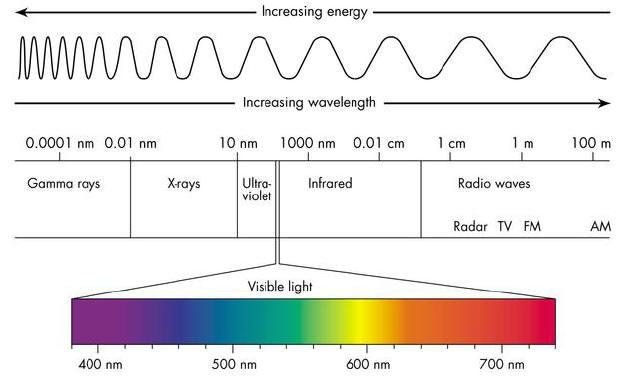What is Light? Understanding the importance and essence of Photography
- Kaustubh Gogate
- Sep 23, 2024
- 4 min read

Light is the heart and soul of photography. Without it, photography wouldn’t exist, as the very word "photography" comes from the Greek words "phos" (light) and "graphé" (drawing or writing). In essence, photography is the art of "drawing with light." Understanding what light is, how it behaves, and how to control it is fundamental to mastering the craft of photography.
1. What is Light?
Light is a form of electromagnetic radiation that can be detected by the human eye. It travels in waves and consists of particles called photons. Light behaves both as a wave and as a particle, a concept known as the wave-particle duality. This unique property allows light to spread, reflect, refract, and be absorbed by various surfaces, which creates the different visual effects we observe in our daily lives.
Visible light is just a small part of the electromagnetic spectrum, which also includes radio waves, microwaves, infrared light, ultraviolet light, X-rays, and gamma rays. In photography, we primarily work with visible light, which falls within the wavelength range of approximately 380 to 750 nanometers (nm).
2. The Properties of Light
Light has several key properties that are important to understand in photography:
Intensity: This refers to how bright or dim the light is. Bright, intense light produces sharp shadows and high contrast, while softer, dimmer light creates gentler shadows and a more even look.
Direction: The angle at which light strikes a subject determines the appearance of highlights and shadows. Different lighting directions (front, side, back) can completely change the mood and feel of an image.
Color Temperature: Measured in Kelvin (K), color temperature determines whether the light appears warm (orange/yellow) or cool (blue). Natural daylight typically has a temperature around 5500K, while tungsten lights are warmer, around 3200K.
Reflection and Refraction: Light can bounce off (reflect) surfaces or change direction as it passes through a medium (refract). These principles are crucial in controlling light with reflectors, diffusers, and lenses in photography.
Hard vs. Soft Light: Hard light creates sharp, defined shadows and is usually produced by small, direct light sources like the sun on a clear day. Soft light produces diffused shadows and is often created using larger light sources or modifiers like softboxes or cloudy skies.
3. The Importance of Light in Photography
Light is everything in photography because it defines the appearance of an image. It affects how we perceive the shape, texture, and color of the subject. Here’s why light is so important:
Defining Shape and Texture: The angle and quality of light can highlight the contours of a subject, bringing out its form and texture. Side lighting, for instance, emphasizes textures by casting longer shadows, while front lighting minimizes texture and flattens the image.
Creating Mood: Light sets the tone and atmosphere of a photograph. Bright, even lighting tends to evoke feelings of clarity, joy, or energy, while low, dim light can create a mood of mystery, drama, or intimacy.
Directing Attention: Photographers use light to guide the viewer’s eye. By illuminating the main subject more brightly than the background or by using contrast in lighting, photographers can ensure the viewer focuses on the most important part of the image.
4. Types of Light Sources in Photography
Natural Light: The sun is the most common natural light source, and its position changes the quality and direction of light throughout the day. Photographers often seek out the "golden hour," shortly after sunrise or before sunset, when the sunlight is soft and warm.
Artificial Light: Artificial light sources include everything from basic household lamps to professional studio lights. Flash and continuous light setups allow photographers to create and manipulate light to suit their needs in controlled environments.
Ambient Light: This is the light that is already present in a scene without adding any additional sources. It could come from natural sources like sunlight, or artificial ones such as street lamps or indoor lighting.
Directional vs. Diffused Light: Directional light comes from a specific source, like a spotlight, and creates strong shadows, while diffused light is scattered, resulting in softer, more even illumination, like light filtered through clouds.
5. Controlling Light in Photography
Mastering the control of light is essential for producing professional-quality photos. Here are some common ways photographers manipulate light:
Modifiers: Tools like softboxes, umbrellas, and reflectors help photographers shape and control the quality of light. A softbox diffuses light to make it softer, while a reflector bounces light onto a subject to fill in shadows.
Camera Settings: ISO, aperture, and shutter speed are the three elements of the exposure triangle that control how much light reaches the camera sensor. Adjusting these settings helps to properly expose the image based on the available light.
Flash: Adding a flash can provide extra light in low-light situations or enhance the look of the scene. The flash can be adjusted to work as fill light, providing a subtle lift to shadows without overpowering natural light.
Conclusion
Light is the key ingredient in photography. Understanding how it behaves, how to control it, and how to use its different qualities will help you create visually compelling images that capture attention. Whether using natural light or artificial sources, mastering the art of light can elevate your photography to the next level.




Comments